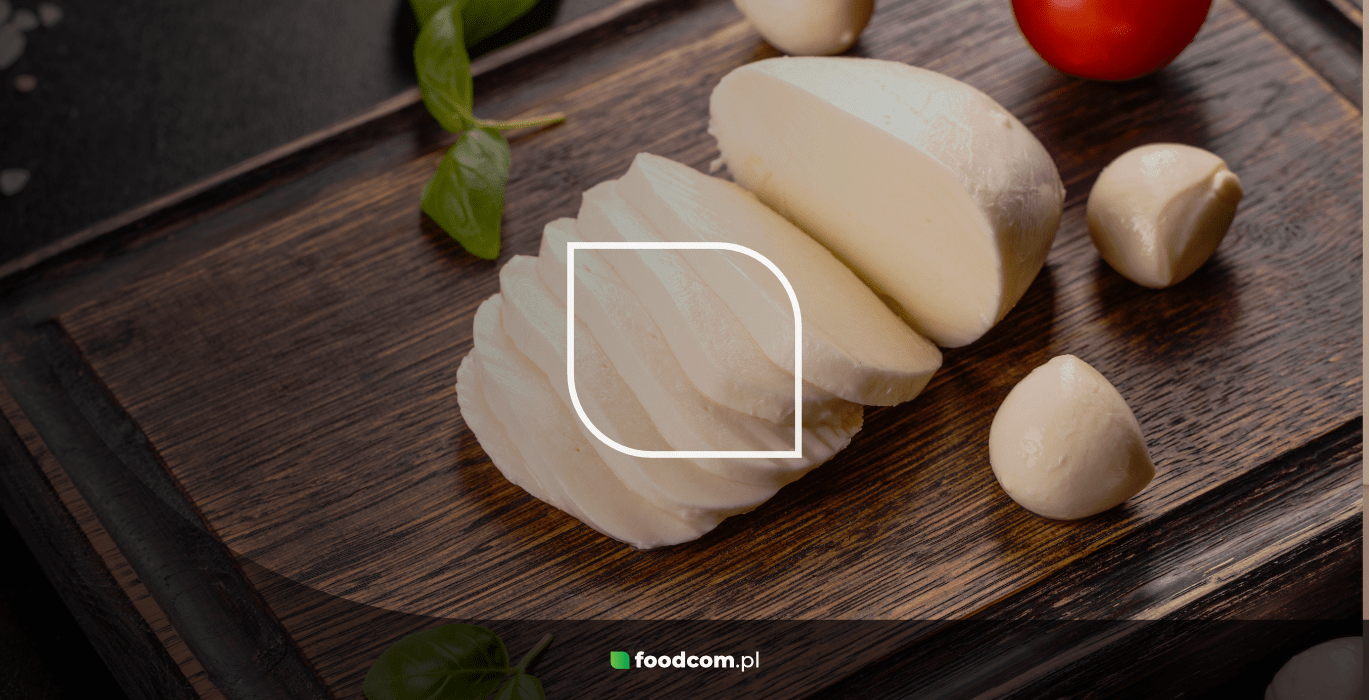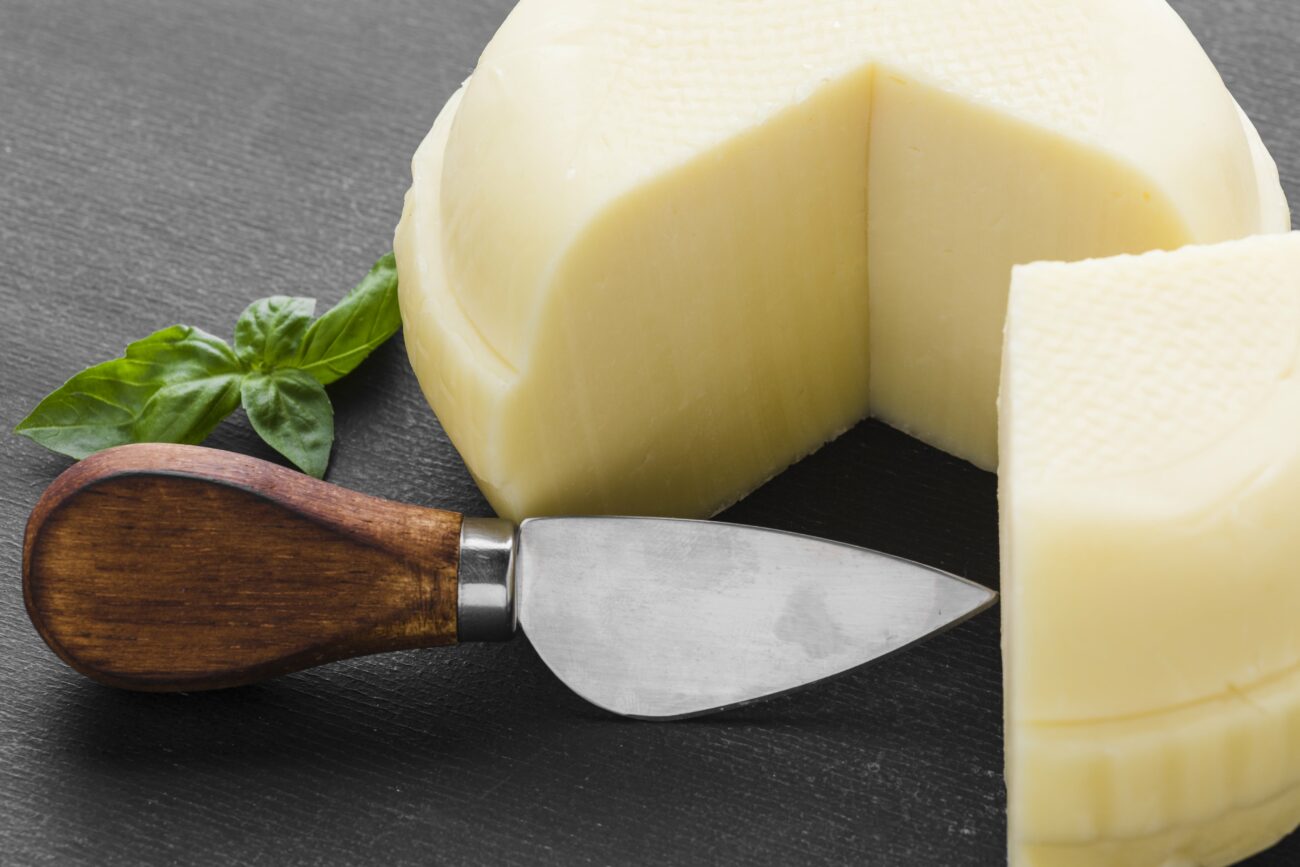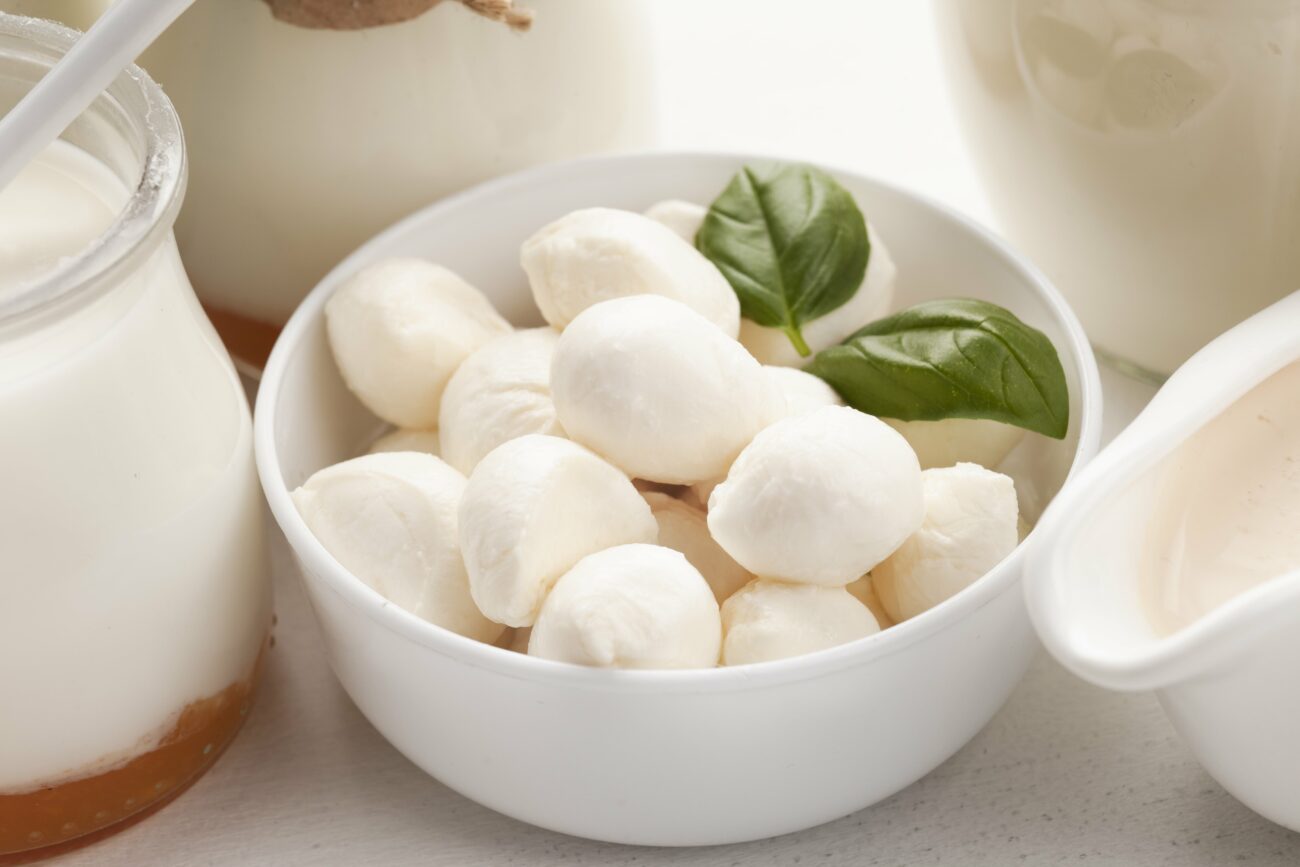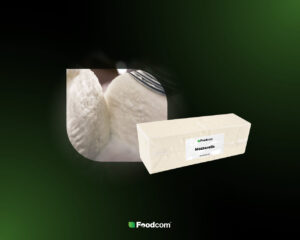- Mozzarella is a renneted cheese traditionally made from buffalo milk, although a more popular version is made from cow’s milk.
- The process of making mozzarella is based on coagulating the milk and bathing the cheese mass in hot whey or water, followed by kneading and stretching.
- The two most common types of mozzarella are fresh mozzarella in the form of balls and harder cheese in the form of a block, cube or shavings.
Mozzarella cheese is a well-known product originating from Italy and is also popular in the kitchens of other countries. We know it primarily as an accompaniment to salads and pizzas. What exactly is mozzarella, how is it made and where is it used? Find out more about the production of this cheese and its uses.
What is mozzarella cheese?
Mozzarella is a rennet cheese that originates from southern Italy, in the Campania region. The term ‘mozzarella’ dates back to 1570. The cheese is an unripened, fresh cheese. Mozzarella is on the PDO (protected designation of origin products) list.
What kind of milk is mozzarella made from? Traditionally, this cheese is made from the milk of buffaloes – female domestic oxen (Bubalus bubalis). It is then called mozzarella di bufala. This variety is more highly regarded than the more popular cow’s milk mozzarella – mozzarella fior di latte. Locally in Italy, mozzarella in some areas is also sometimes made from sheep’s milk (mozzapecora) or goat’s milk.
Mozzarella is an ingredient in many traditional Italian dishes, such as caprese salad and casseroles and pasta dishes. It is also used in the baking of pizzas and lasagna, as well as in the preparation of some desserts. Mozzarella made from cow’s milk with the addition of cream can be used to make another traditional Italian cheese, burrata.
Unlike various soft cheeses, such as blue-veined or smear cheeses, mozzarella does not need to be matured and has a milder flavour.
Properties of mozzarella
Mozzarella usually comes in the form of lumps – compact, rounded lumps with a smooth surface. They are usually 80-100 g and about 6 cm in diameter. The mozzarella balls are immersed in whey or brine. In this way it can be stored for about a week. Traditionally, mozzarella is served the day after it is made.
The cheese has a creamy texture and a delicate flavour. It makes a distinctive creaking sound when eaten. It melts easily, does not crystallise and, once melted, is characterised by considerable malleability and elasticity. Under the influence of high temperature it blushes easily, which is a result of high water and lactose content and the Maillard reaction taking place.
Mozzarella is white or ivory in colour. Occasionally, it may have a yellowish/brownish colour due to the use of the R110 enzyme in its production. The cheese has a slightly acidic pH. It contains about 40-50% water and 20-40% fat, as well as about 20-25% protein, a large amount of minerals (especially calcium and zinc) and vitamins (A and B12). Mozzarella contains approximately 300 kcal per 100 g of product.
What types of mozzarella are there?
As already mentioned, mozzarella can be made from milk from different animals. Traditionally this is buffalo milk, but more popular is mozzarella made from cow’s milk. There are also different types of mozzarella because of the form it takes. It can be:
- mozzarella in a ball – the most popular form, used primarily as a salad topping;
- bocconcini – mozzarella in the form of small balls the size of an egg or smaller ones the size of a cherry (ciliegine);
- smoked mozzarella (affumicata);
- diced mozzarella cheese – block mozzarella is a harder mozzarella, with reduced water content, easy to slice, more neutral in flavour, made for melting and baking;
- mozzarella in the form of cheese shavings, used primarily for baking pizzas.
The price of mozzarella has peaked in recent years in 2022, but has been on the rise again since 2023. The most expensive and considered a luxury product is mozzarella di bufala campana, which comes from buffalo milk, which is difficult to find. It can be several times more expensive than the popular mozzarella made from cow’s milk. The price can also be increased by the certificates of origin the product has, such as DOP.
How is mozzarella produced?
Mozzarella, like other rennet cheeses, is made by denaturing milk with rennet. In the industrial production of mozzarella, pasteurised cow’s milk is used, to which starter cultures are added to coagulate the milk. The resulting paste is left to stand for several hours until it reaches a pH of 5.2-5.5. The whey is then separated from it through the processes of cutting, mixing, heating and draining.
The next step is a process known as filata paste. The cheese mass is soaked in whey or water at very high temperatures, up to 95°C. Once the cheese begins to float, most of the liquid is removed and the mass is subjected to stretching and kneading of the cheese, traditionally by hand and with the addition of hot water. Kneading is carried out until a smooth mass with a fine texture and a fibrous texture is formed. Individual lumps of mozzarella are formed from strips cut from it.
When it comes to mozzarella, the biggest producers in the world and in Poland are: Italian companies Galbani and Granarolo, European: Arla Foods, FrieslandCampina and Lactalis, American: Bel Gioioso and Saputo, and Polish: Mlekovita, Mlekpol, Zott, SM Spomlek and SM Piątnica. A trusted distributor of mozzarella is Foodcom S.A., which offers not only cheese, but also other dairy and vegetable products, food additives and food concentrates, both protein concentrates and other products.
Mozzarella, despite its simplicity, is a unique cheese with a rich tradition and versatile uses. The unique process of its production influences the delicate taste of the cheese, which has won the hearts of gourmets all over the world. On the other hand, the various forms of mozzarella make it perfectly suited to both everyday cooking and exquisite dishes.











